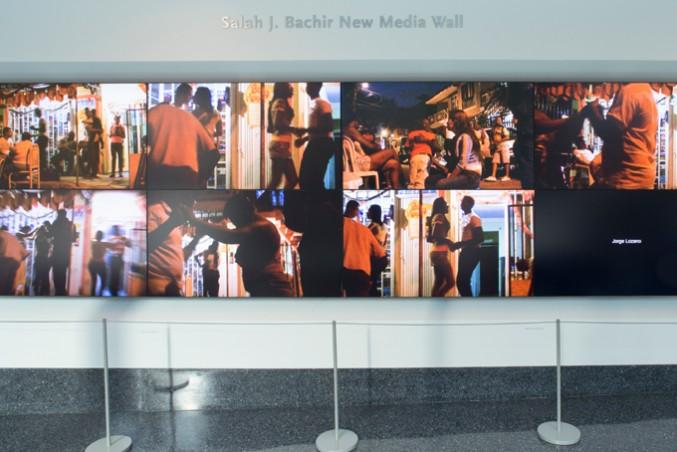By Anika Syeda
Toronto-based videographer Jorge Lozano’s MOVING STILL_still life — appearing at the Ryerson Image Centre [RIC] — is a glimpse into the harsh lifestyle of Siloé, Colombia.
MOVING STILL_still life — remade into eight screens from its original seven for the RIC’s Salah J. Bachir New Media Wall — is an installation depicting life in Siloé, Colombia, where national war has been active for over 50 years. The installation includes images, interviews, re-enactments and more.
Lozano grew up in a similar neighbourhood to Siloé, immersed in gangs and war. As a student, he fought in the civil war against oppressive militaristic forces.
“I’ve seen shootings, people dying, bullets very close, making sound,” he said. “This is a thing that happens daily.”
MOVING STILL_still life is a collage of images of his subjects, their friends and family, the culture-rich streets of poverty-stricken Colombian neighbourhoods, the surrounding landscapes and interviews conducted by Lozano’s workshop participants Edward BlackFire, Rodolfo Tovar and Ronald Vergara. They gathered interviews with criminals, innocent civilians and others. The installation translates their words through English subtitles.
“A lot of people have asked me … ‘Are they that eloquent or is it your translation?’” he said. “They don’t even imagine people in ghettoes could be intelligent.”
The artist said neighbourhoods ripe with violence are often eclipsed by an overbearing stigma that paint every character as “the bad guy.” Lozano integrates violent re-enactments, or “portraits of reality,” of the characters’ lives, including shots of blood-covered gunslingers holding up hospital patients. However, he makes sure to show the “bad guys’” sympathetic qualities.
Real life criminals are interviewed, including 15-year-old assassin Mikael, who carries a black gun, saying silver “shines and they run before you kill them.” When asked where and how he finds his weapons, he laughs, saying, “What do you mean, how? The normal way. Contacts.”
Despite the child’s calloused demeanor, Lozano said these guns are made available to him by wealthier countries like the U.S.
“They don’t make the weapons,” Lozano he said. “The system makes the weapons.”
Another interview delves into the life of a female paramilitary soldier in prison. Her group has been known to control massive territories and ethnically “cleanse” leftist, queer and other marginalized communities.
Remedios is a mother in the installation heavily involved with one paramilitary group that raided a neighbourhood.
“I don’t feel sorry,” said Remedios. “If I have to do it again I will, to fight for peace and tranquility.”
But according to the videographer, many Colombian viewers changed sentiment towards the paramilitaries upon watching his interview with Remedios. Lozano shows her as intelligent and a loving mother.
“Regardless of being in this fascistic kind of group, she’s human,” he said.
“In a conflict, not everyone knows who is the bad guy.”
MOVING STILL_still life is at the RIC unti Dec. 13.










Leave a Reply